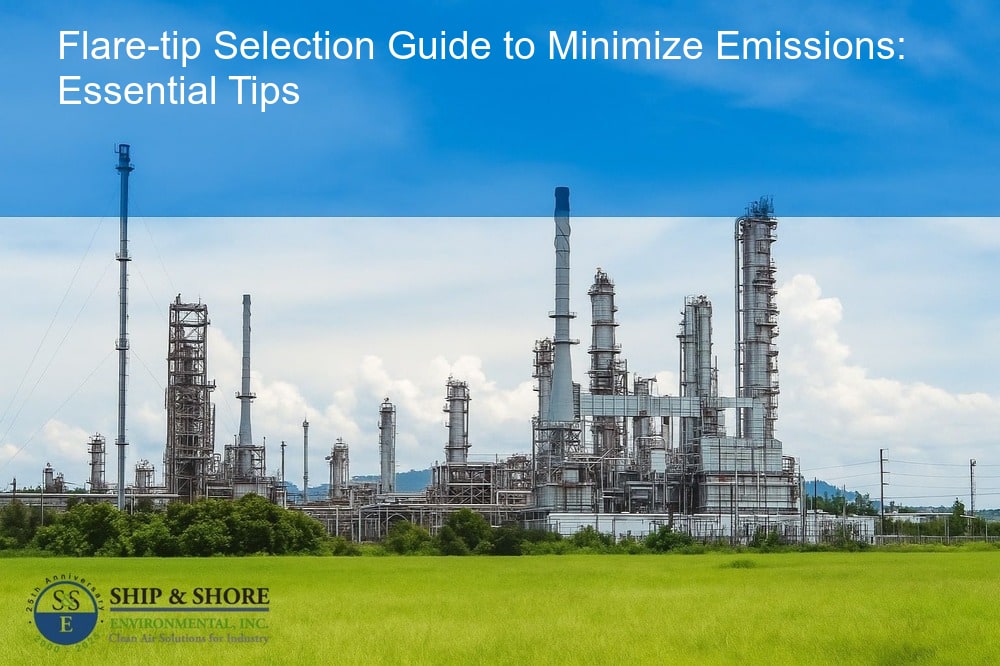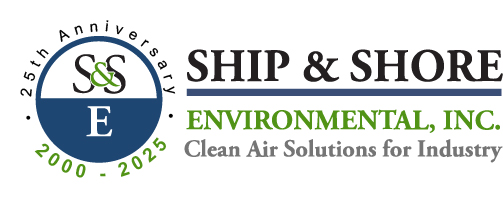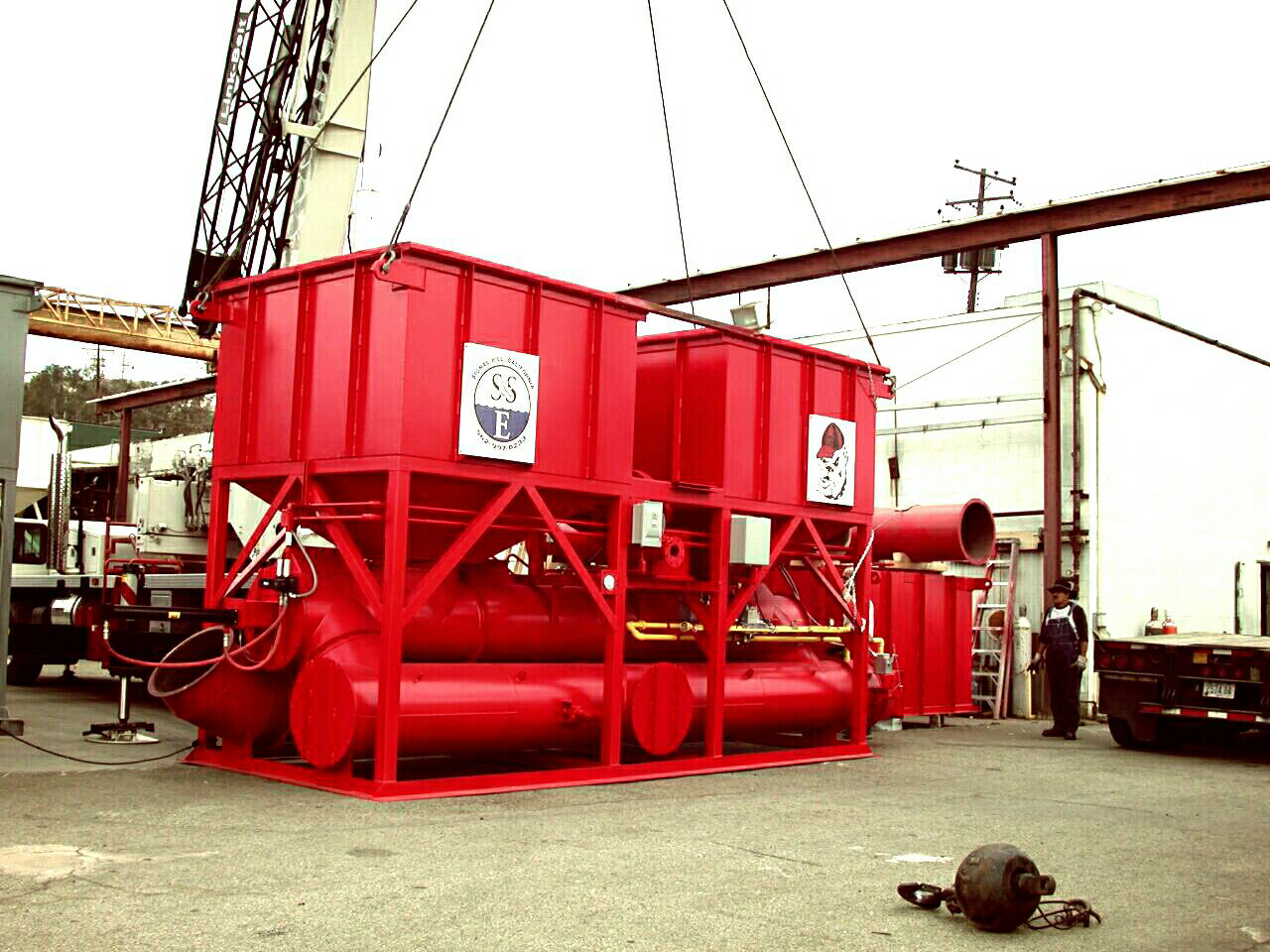
Flare-tip Selection Guide to Minimize Emissions: Key Strategies
August 25, 2025 5:36 amUnderstanding the Importance of Flare-tip Selection
In the realm of emission control, the importance of selecting the right flare-tip cannot be overstated. Our flare-tip selection guide to minimize emissions is a crucial tool for industries aiming to become more environmentally responsible while adhering to stringent regulatory standards. With the appropriate flare-tip, we can efficiently manage emissions, enhancing both operational performance and environmental compliance.
The Link Between Emissions Volume and The Right Flare-tip
The volume of emissions produced by industrial processes is directly influenced by the type of flare-tip in use. Flare-tips are designed to handle different capacities and compositions of waste gases, and selecting an inadequately sized or mismatched flare-tip can lead to increased emissions, incomplete combustion, and operational inefficiencies. By tailoring the flare-tip to the specific emissions volume, we can optimize combustion processes, thereby reducing the release of harmful pollutants into the atmosphere.
Setting The Stage: Getting Started with Flare-tip Selection
Embarking on the journey of flare-tip selection involves a comprehensive understanding of the operational parameters and specific requirements of the industrial setup. It’s essential to evaluate factors such as the type of waste gases, their flow rates, and the desired combustion efficiency. By systematically assessing these elements, we can lay the groundwork for choosing a flare-tip that aligns with our emission control goals.
At Ship & Shore Environmental, Inc., we recognize that the initial stage of flare-tip selection is pivotal in setting the tone for effective emission reduction strategies. Our approach incorporates detailed analytics and industry expertise, enabling us to provide guidance tailored to the unique needs of each client. Together, we can navigate the complexities of flare technology, ensuring that our selections not only meet but exceed regulatory requirements and environmental standards.
Factors to Consider when Navigating through Flare-tip Choices
Selecting the appropriate flare-tip for emission control involves several critical factors. It is essential to understand the nature of the gas stream, which can vary in composition and flow rate. Accurate data on the chemical makeup, as well as the pressure and temperature of the flare gas, play significant roles in the flare-tip selection process.
Equally important is the environmental regulatory landscape. Compliance with federal, state, and local regulations is non-negotiable. Therefore, staying updated on emission standards and potential changes is a must. We also need to consider the physical constraints of the installation site. Available space, as well as proximity to sensitive areas like residential zones, can influence the design and performance of the flare-tip.
Another key factor is the operational parameters. Factors such as maintenance schedules, expected operational life, and ease of installation affect both the choice of flare-tip and its long-term performance. Transitioning smoothly from an old system to a new one can be crucial for minimizing downtime and optimizing efficiency.
Practical Steps in Your Flare-tip Selection Guide to Minimize Emissions
To achieve the best results in minimizing emissions, we should follow a systematic approach. This Flare-tip selection guide to minimize emissions includes several practical steps:
- Gather Necessary Data: Before making any decisions, collect detailed information on gas composition, flow rates, and pressure levels. Utilize real-time monitoring tools to get accurate readings.
- Regulatory Compliance: Ensure all selected equipment meets the latest environmental regulations. Review any recent updates to make sure your flare system aligns with new standards.
- Site Assessment: Conduct a thorough analysis of the installation site. Evaluate spatial constraints and identify potential challenges. This step is crucial for designing a system that fits well into the existing framework.
- Operational Needs: Consider the operational demands of your facility. Select a flare-tip that is easy to maintain and supports long-term reliability.
- Consult Experts: Engage with industry experts and flare system manufacturers to gain insights and validate your selection. Professional guidance can offer additional perspectives that you may not have considered.
Real-World Examples: Successful Emission Reduction through Flare-tip Selection
In various industries, the right flare-tip selection has led to significant emission reductions. For instance, a leading petrochemical company managed to cut its emission levels by 30% using state-of-the-art flare-tips designed for high-efficiency combustion. They followed a comprehensive approach that included on-site data collection, extensive testing, and rigorous compliance checks.
Similarly, a major refinery facing stringent regulatory requirements was able to meet and exceed standards by upgrading its flare system. By implementing a well-considered flare-tip selection guide to minimize emissions, they achieved a significant drop in pollutants released into the environment. This not only helped in meeting current regulations but also positioned the company as an industry leader in sustainable practices.
Achieving such tangible results demonstrates the critical importance of careful flare-tip selection in emission control efforts. With an informed and methodical approach, it’s possible to make substantial environmental improvements while maintaining operational efficiency.
Did you know? Selecting the right flare-tip can significantly reduce emissions, making industrial setups more sustainable and compliant with environmental regulations.
Achieving Tangible Results: The Impact of The Right Flare-tip Selection
As we conclude our journey through the flare-tip selection guide to minimize emissions, it becomes evident that the right choice in flare-tip can have a substantial impact on industrial operations. By choosing wisely, we not only adhere to stricter environmental standards but also contribute significantly to the global effort to reduce harmful emissions. This proactive approach ensures that our industrial setups are not just compliant but are leaders in sustainability and innovation.
Future-Proofing Industrial Set-Ups with Proper Flare-tip Selection
Looking ahead, the investment in selecting the appropriate flare-tip is more than just a regulatory requirement; it is a forward-thinking strategy. The focus on optimizing flare-tip efficiency and reducing emissions ensures that our operations are eco-conscious and economically viable. By integrating options such as low NOx flares, we can effectively mitigate the release of nitrogen oxides, positioning ourselves ahead in the industrial landscape.
Final Remarks: Making Emission Control A Pragmatic Reality
In wrapping up, our commitment to the flare-tip selection guide to minimize emissions represents a tangible step towards a cleaner, greener future. The meticulous process of selecting the right flare-tip is an investment in the durability and efficiency of our operations. By championing proactive measures and leveraging innovative technologies, we underline our dedication to environmental stewardship. Together, let us continue to make emission control not just a goal, but a pragmatic reality that benefits both our industry and our planet.
FAQ
Why is flare-tip selection crucial for minimizing emissions in industrial operations?
In industrial operations, the flare-tip is a critical component in controlling emissions. A well-chosen flare-tip ensures the efficient combustion of waste gases, thereby minimizing the release of harmful pollutants. By selecting the right flare-tip, we effectively reduce our environmental footprint, adhering to regulations and demonstrating our commitment to sustainability.
What factors should be considered when choosing a flare-tip?
When selecting a flare-tip, several factors come into play. These include the type and volume of gases to be flared, the combustion efficiency required, the prevailing wind conditions, noise restrictions, and the desired reduction in emissions. Additionally, we must evaluate the economic aspects and maintenance requirements to ensure the flare system’s long-term performance.
How can the proper flare-tip selection future-proof industrial setups?
By opting for a flare-tip that accommodates current and potential future environmental regulations, we position our operations for long-term success. Innovative technologies, such as low NOx flares, not only reduce emissions today but adapt to stricter standards that may emerge. This proactive approach protects against future compliance challenges, securing operational continuity and leading to economic benefits.
Can you give examples of how the right flare-tip has reduced emissions in practice?
Absolutely. For instance, some facilities have transitioned to multi-point ground flares, which distribute combustion over a larger area and reduce visible smoke. Other facilities have utilized steam-assisted flare tips, drastically cutting down emissions by improving combustion efficiency. These real-world applications showcase the effectiveness of carefully considered flare-tip selections on emission control.
What are the consequences of not optimizing flare-tip selection?
Failure to choose an appropriate flare-tip can result in suboptimal combustion, leading to excessive emissions of pollutants such as nitrogen oxides (NOx) and volatile organic compounds (VOCs). This can lead to regulatory non-compliance, reputational damage, potential fines, and a negative impact on both local environments and global atmospheric quality.
Categorised in: Blog

